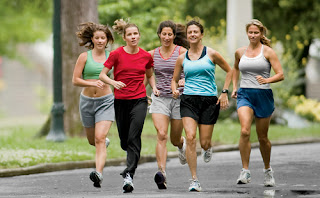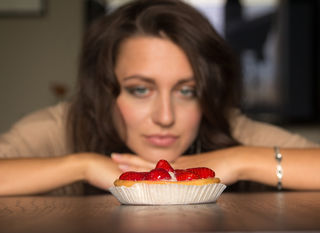For the initial quite a few years of Dominique Calabrese's association with his better half, he was not a competitor. He smoked, didn't eat well and infrequently practiced while climbing the professional bureaucracy and building a cherishing family. At that point, in 2004 at age 49, he experienced a sextuple heart sidestep technique and chose to significantly change his propensities. He took up turning, at that point street cycling and, in 2010, started showing turn classes himself.
By 2014, he'd lost 75 pounds and hit an individual record of cycling 10,021 miles in a single year alone. Today, in spite of confronting numerous other medical issues en route – including tongue disease – Calabrese says he's "back to doing crazy difficulties," having finished more than twelve rides more than 100 kilometers every this year alone.
It's sheltered to state he's an unexpected man in comparison to the one his better half initially met. "While my life partner once in a while figures what I do is ludicrous for somebody my age, it doesn't represent a relationship issue," says Calabrese, now a 62-year-old in Chevy Chase, Maryland.
That is not generally the situation for couples in which one part is a dedicated competitor – ace or novice – and the other is, well, just not, says Terri Orbuch, an advisor known as "The Love Doctor" and research teacher at the University of Michigan Institute for Social Research. Likewise with any couple in which one part has a prominent profession or one that removes him or her from the other for long extends of time, couples can confront down to earth issues like how to divvy up family unit errands and in addition intense subject matters like envy.
"You can start to encounter instability – they look extraordinary, I look not all that good; they're getting the greater part of this approval and assertion, however not me," says Orbuch, creator of "5 Simple Steps To Take Your Marriage From Good to Great." While particularly about weight reduction and not games, one 2013 examination gets now: In it, analysts found that a few connections soured after one accomplice shed pounds, since the person who didn't now and then felt constrained, angry or debilitated by their accomplice's new propensities and character.
Luckily, much of the time in the examination and a lot of true cases, organizations amongst competitors and non-competitors flourish similarly as promptly as some other connection between individuals with various professions or interests. All things considered, dating or being hitched to a competitor accompanies an extraordinary arrangement of contemplations and insider tips. Among them:
1. Sports can be all-consuming.
When Corrin Miller, now a 34-year-old marketing manager in Portland, Oregon, began dating her now-husband, Joe English, an elite runner, running coach and former U.S. News contributor, she knew he was passionate about running and cycling. But while attending her first race of his, she saw "the amount of mental, physical and emotional preparation" one race requires, she says. "Experiencing this level of dedication in one person was my moment of truth." In other words: Assuming your loved one can easily compartmentalize his or her sport the way you may be able to leave work at work may set you up for disappointment. "They are eating, thinking, talking and training nonstop about that marathon or about that race," Orbuch says.
2. Your support is invaluable.
To English, Miller is far more than someone who can take the dog out while he's training or a loving face on the sidelines when he's racing. "Corrin is my rock on race weekends," providing encouragement in the form of words, massages and post-race (sweaty) hugs when she's there, and calls and texts when she's not, he says. "There's so much shared happiness and joy in those moments," English says, "because as a partner, she's truly happy for me when I complete a goal, and I'm happy to have someone that has invested so much time and energy in helping me get there."
3. Your interests are just as important.
English knew early on that limiting his dating pool to elite athletes would likely leave him single. "I had little expectation of finding someone that would both be compatible as a partner and also an elite multi-sport athlete – that's a lot of boxes to check in a person," he says. Now, he and Miller appreciate the interests they do share as well as those they don't. "His longer training rides or runs have always provided me space and time to have alone time and enjoy my own hobbies," says Miller, who enjoys doing yoga, crafting and spending time with friends and family. Calabrese also points to the fact that his and his wife's interests help sustain, not detract from, their relationship, particularly during retirement. "Otherwise, we would always be together, and that can be an impossible long-term adjustment," he says.
If you're losing sight of your own talents and interests, make a list of five qualities you value in yourself, Orbuch recommends. Confide in your partner, too. "They may see your beauty and wonderful body and that you're doing special things in your life," Orbuch says.
4. Communication is key.
Athletes, their partners and relationship pros agree: Good communication is the essential ingredient for making these types of relationships work. That means talking about everything from what takes priority – a family event or a long run – during training to where the partner is going to meet you after the race to how the athlete is feeling after any given workout. "Every relationship involves two people, with two belief systems and two sets of priorities," Miller says.
One trick for raising relationship concerns most effectively: Begin with a compliment ("I love how dedicated you are to your sport"), raise your concern ("Sometimes I feel like I don't have enough time for my own interests") and finish with a request ("Can you help me?"), Orbuch suggests. "Don't use 'you' statements," she says.
5. Emotional roller-coasters are normal.
"It's not you, it's me." Whether or not your partner says this, it's probably true if he or she seems emotionally unpredictable. "There will be happy times, stressful times, focused times and even sad times," English says. "It's important for the non-athlete to know that this is normal for athletes." Over time, you'll learn what to expect, what emotional cues to look out for and how best to respond.
6. Obstacles can be opportunities.
When English was training for an Ironman triathlon in Australia, Miller could have felt resentful that he was spending hours on the road and in the water on nights and weekends when other couples were attending events and enjoying movie nights in. Instead, they planned weekend getaways along the Oregon coast, where he could train and she could meet him at various points along the way. Since then, they've traveled to Ottawa, Ontario; New York City; Sacramento, California; Vancouver, British Columbia, and even got married last year during the Rock 'n' Roll half-marathon in Las Vegas. "We've had some amazing trips to really cool places – places I would have only dreamed of visiting prior to meeting Joe," Miller says.
Courtesy: http://health.usnews.com/wellness/articles/2017-08-24/7-things-all-partners-of-athletes-know





